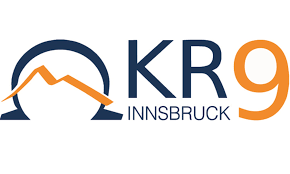- Home
- Publications
- PAGES Magazine
- Climate Change: The Karst Record IX Conference (KR9)
Climate Change: The Karst Record IX conference (KR9)
Moseley GE
Past Global Changes Magazine
30(2)
127
2022
Karst environments host a rich array of geological archives that allow us to improve our understanding of climatic and environmental changes, as well as landscape and human evolution. Such archives are commonly found in caves where they are both well connected, but also well protected from the surface, with the importance of clastic and chemical sediments being discussed at symposia for over 60 years (Dell'Oca 1961). Since 1996 in Bergen, Norway (Lauritzen 1996), Climate Change: The Karst Record (KR) has been the premier conference for international scientists to present and discuss the latest in cave and karst-based paleoclimate and paleoenvironmental research. Due to the major advances and developments in speleothem science over the last few decades (Henderson 2006), the conference naturally began focussing on speleothem-based research. For the recent KR9 conference (pastglobalchanges.org/calendar/26918), which was held at the University of Innsbruck, Austria, and online, the conference widened its focus. In addition to being a showcase for the latest speleothem research, the meeting also welcomed contributions from those working in the quickly developing (but disappearing) field of cave ice (Fig. 1), as well as the more traditional field of clastic sediments and speleogenetics.
Over three days, 183 delegates (including 34 online) from 30 countries presented 169 oral and poster presentations. PAGES provided funding for 15 delegates, including 11 early-career scientists and five researchers from developing countries. Climate variability on orbital, millennial, decadal, and seasonal timescales was a strong focus of the conference and included keynotes that examined opposite ends of the timescale spectrum. Heather Stoll (ETH Zürich, Switzerland) presented on North Atlantic meltwater pulses and temperature changes in the orbital session, whereas Ashish Sinha (California State University Dominguez Hills, USA) presented in the decadal session on the speleothem record of climate–society relationships in the Indian subcontinent. The integration of speleothem data in climate models and data–model comparisons was also discussed and explored further in a keynote by David McGee (MIT, USA), while Robyn Pickering's keynote on uranium–lead dating of speleothems from the Cradle of Humankind, South Africa, topped off the session on cave records of human history.
The majority of these presentations were focused on speleothem studies. Thus, an extensive review of cave monitoring, method and technical developments, and geochemical modeling and laboratory experiments, which aimed to improve understanding and analysis of the speleothem archive, were very welcome. A keynote by Hagit Affek (Hebrew University of Jerusalem, Israel) provided valuable insights into the continually developing speleothem 17Oexcess proxy. Beyond the speleothem topics, participants enjoyed presentations on the cave-ice archive, clastic sediments, and a diverse open session. Several presentations were also given online, including poster presentations, and, on the whole, the hybrid format generally worked as well as could be expected. Dakalo Maphanda (University of Witwatersrand, South Africa), Charlotte Honiat (University of Innsbruck, Austria), Melina Wertnik (ETH Zürich, Switzerland), and Marit Holten Løland (University of Bergen, Norway) all received outstanding student presentation awards.
Beyond the main plenary, participants had the possibility to participate in workshops where they developed knowledge and skills in using the Speleothem Isotopes Synthesis and AnaLysis (SISAL; pastglobalchanges.org/sisal) database, speleothem petrography and microstratigraphy, age modeling, and radiocarbon as both a geochronological tool and environmental tracer. Field trips were offered to Spannagel Cave (Spötl et al. 2002), the Hintertux glacier cave, and Eisriesenwelt, the largest ice cave in the world (Fig. 1).
As five years had passed since the last Karst Record meeting in Texas, USA, KR9 provided a much-needed and welcome opportunity for this small but rapidly developing community to meet and discuss developments in the field. In addition, a "mini summer school of speleothem science" took place for early-career researchers in the two days prior to KR9, providing valuable professional development opportunities. Free childcare was offered during the main conference, and KR9 was classified as a Green Event by the local authorities.
The competition to host KR10 was a close one! We look forward to KR10 in South Africa in 2025.
Acknowledgements
We would like to thank PAGES, the International Association of Sedimentology, the University of Innsbruck Rectorate and Faculty of Geo- & Atmospheric Sciences, the Innsbruck Tourism Board, Thermo Scientific, and Messer for their financial support.
affiliation
Institute of Geology, University of Innsbruck, Austria
contact
Gina E. Moseley: gina.moseley uibk.ac.at
uibk.ac.at
references
Dell'Oca S (1961) Riempimenti naturali di grotte. Rassegna Speleologica Italiana, 277 pp
